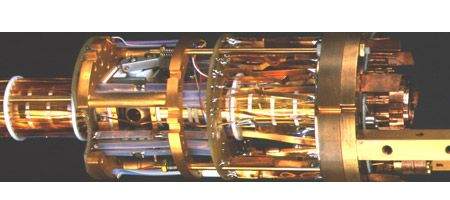Scientists have for the first time been able to peer inside an atom made entirely of antimatter and take a look at its internal structure.

The ATRAP Collaboration, based at CERN, uses antiprotons from the Antiproton Decelerator and positrons from a radioactive source to produce cold antihydrogen. Using a new method, it can detect more antihydrogen atoms in an hour than have ever been reported before.
Indeed, for this research, the team made actual observations of more than 1,400 cold antihydrogen atoms – and say they’re close to actually capturing one.
Antihydrogen is the simplest type of antimatter, just as hydrogen is the simplest form of matter. The two are expected to have exactly the same properties.
If an antihydrogen atom is put near a battery, the positive charge of its positron is attracted towards the negative terminal of the battery, while the negative charge of its antiproton is attracted to the battery’s positive terminal. If the battery has a high enough voltage, the strain on the atom will pull the atom apart.
If the positron and antiproton are far apart in the atom, then a very small voltage will pull the atom apart; while of they’re closer together, more voltage will be required. It’s observing these differences that allows the scientists to get a glimpse of what’s going on inside.
Antimatter is one of the universe’s biggest mysteries. Current theories suggest that the Big Bang should have created equal amounts of matter and anti-matter – but if that were the case, they should have encountered each other and been destroyed long ago.
Having made this first step, the team now plans to try and probe antihydrogen atoms with laser light. This should give a clearer picture of the energy levels within.






